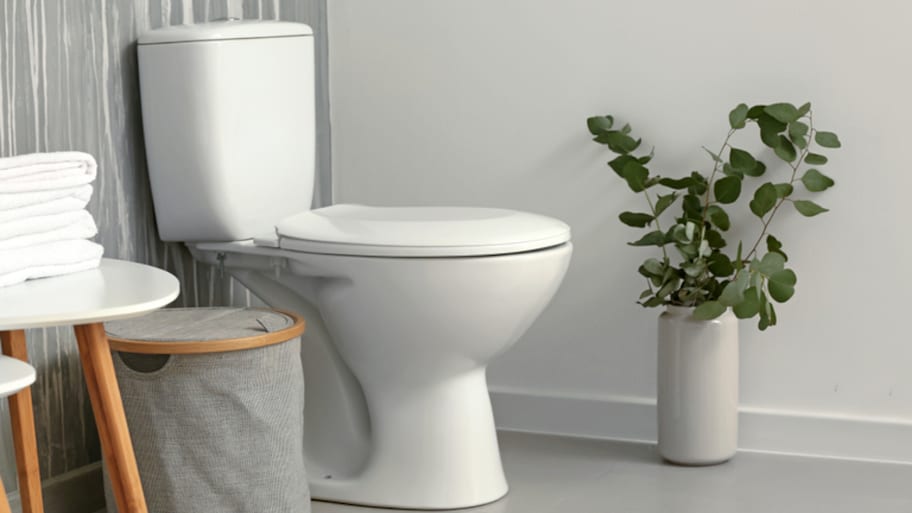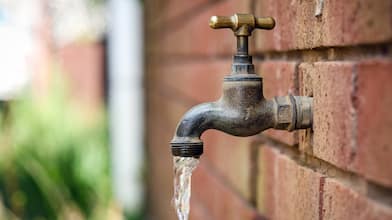Flush with confidence
Your toilet probably seems like a simple fixture, but there’s more to it than meets the eye. Modern toilets come with optional water-saving features and powerful bowl-clearing technology that are far more sophisticated than in bathrooms of the past.
So if you’re considering upgrading your bathroom, you’ll want to be sure you invest in a toilet with a flushing system that meets your needs and is right for your family. Read on to make that choice with confidence.
2 Main Categories of Toilet Flushing Systems
Thanks to the Energy Policy Act of 1992, new toilets have since been required to use 1.6 gallons of water or less per flush. If your toilet is circa 1990, it might not flush so clean. But modern toilets now use 0.8 to 1.6 gallons efficiently, so it’s never been a better time to replace an old toilet.
The first thing to know is that home toilets fall into two main categories: pressure-assisted or gravity flush. Most home toilets are gravity-powered. Let’s compare the two.
Pressure-Assisted Flush System
Ever hit the flush button in the bathroom at an airport and heard a loud whoosh? If your keys fell in, they’d be gone before you could turn to look. That’s a pressure-assisted toilet. They’re common in commercial buildings, but you’ll occasionally find them in homes.
How It Works
As water enters your toilet’s tank, air builds up and causes pressure. When you flush, which might be done via a button on the wall, a blast of pressurized air is forcefully released along with a gallon of water. The pressure leaves the toilet bowl nice and clean for the next person.
Pros and Cons
The pressure-assisted toilet system is efficient at keeping your toilet bowl clean due to its powerful flush. That powerful flush does have a few potential pitfalls, however. It is loud enough to disturb your household and can instantly whisk away anything your preschooler drops in.
For this reason, you might want to save the pressure-assisted systems for the restrooms that get constant use, like those at the office or a baseball stadium.
Gravity Flush System
Gravity has powered toilets through the years, and most home toilets have gravity flush systems, so you’re probably most familiar with these.
How It Works
On most toilets, a water tank is mounted above the bowl. When you trip the flusher, the tank releases water that enters the bowl through tiny holes located just below the rim of the toilet seat. This process creates water pressure that pushes the waste down to the trapway, then off to the city’s sewer system. The bowl then refills with clean water.
Pros and Cons
This system is classic for a reason. It’s quiet, easy to install, and plumbers at any level will be able to repair it. Gravity toilets are prone to clogs, but you can unclog your toilet with a few simple steps.
From there, there are a couple of types of gravity flush toilets.
Siphon Flush Valve System
A siphonic flush toilet looks like a standard gravity toilet to the untrained eye, but pros see the difference. A siphonic flush toilet has a curved trapway on the base of the toilet. One end is connected to the drain pipe.
How It Works
The siphon flush system uses a flushing lever or button to open a flush valve that releases water into the toilet bowl. This rush of water triggers the siphon into action. This tube is perched above the surface level of the reservoir in your toilet.
When water travels up the tube and crosses a threshold in the siphon, gravity causes the pressure to move the waste from the trap to the septic tank. Once empty, the valve stopper seals the hole so fresh water can fill the toilet.
Pros and Cons
You get a powerful flush from a siphon flush system, resulting in a cleaner toilet bowl. On the flip side, your toilet may be more prone to clogs due to the trapway's long, narrow shape. The parts might also be proprietary, so there’s a good chance you won’t find them on a quick run to the local store. You might need to call in a local plumber for repairs.
Dual Flush System
Dual flush systems incorporate water-saving properties. You’ll recognize them because they offer a choice of flushing with less water if the waste is all liquid.
How It Works
The dual flush system works the same as a gravity toilet, with the only difference being a choice. Your dual flush toilet will likely have two buttons or a handle you pull in one direction for liquids and another for solids. This function allows you to flush with less water for liquid-only waste. Otherwise, you can choose the more-water option to clear out solid waste.
Pros and Cons
Dual flush systems are environmentally friendly and conserve water better than most toilet flushing systems. However, it can be harder to find replacement parts.
Other Considerations for Choosing a New Toilet
Once you’ve decided which flushing system makes the most sense for you, factor in these different features when shopping for a new toilet:
Energy-efficiency savings
Simplicity
When in doubt, a local toilet installer can help you find the perfect toilet for your home.





